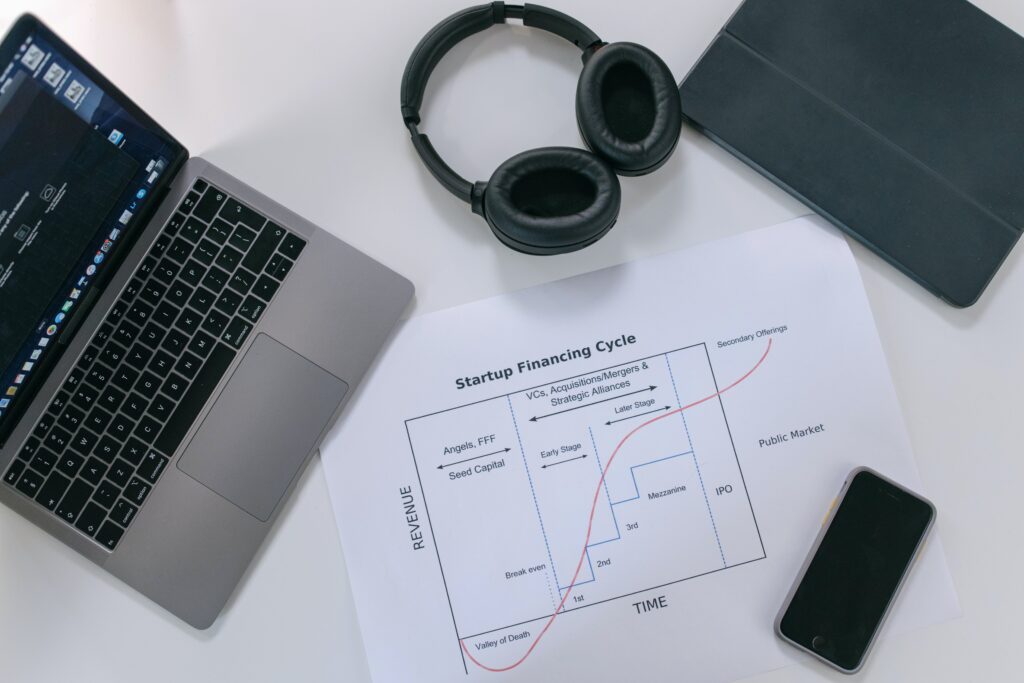ROI (Return on Investment) is a crucial metric for any business activity, and research is no exception. Whether you’re in a rapidly changing environment or a well-structured goal-oriented one, understanding and demonstrating the ROI of research is essential. In this guide, we will walk you through a 7-step process to maximize your research ROI.
Table of Contents
What’s ROI and Why Is It Important for Researchers?
Return on Investment (ROI) is a vital metric that evaluates the effectiveness of investments, including research. In the context of research, ROI measures the value generated compared to the resources and time invested. It is of paramount importance to researchers and organizations for several key reasons:
- Resource Justification: In times of economic uncertainty, ROI justifies allocating resources to research over other departments. It demonstrates that research is an investment, not just an expense.
- Informed Decision-Making: ROI helps shape strategic decisions by ensuring research aligns with organizational objectives, contributing to growth, profitability, and efficiency.
- Budget Allocation: It guides budget allocation, indicating where resources are best allocated, ultimately leading to more informed product development.
- Sustainability: Research teams showcasing ROI are better equipped to retain or secure increased budgets, ensuring long-term sustainability.
- Cross-Functional Collaboration: Demonstrating ROI encourages cross-functional collaboration as research’s positive impact on various departments becomes evident.
- Competitive Advantage: ROI-driven organizations gain a competitive edge through informed decisions, product enhancement, and adaptability in a dynamic business environment.
ROI, in essence, quantifies the value of research, making it an indispensable tool to demonstrate its real worth within an organization.

Step 1: Recognize the Significance of Research ROI
In an environment of economic uncertainty, the importance of Return on Investment (ROI) cannot be overstated. Business leaders are becoming more focused on evaluating the impact of every dollar spent. This paradigm shift necessitates a proactive approach from research teams in understanding and demonstrating the ROI of their work.
As the process unfolds, it is pivotal to understand that research is not just an expense but an investment in making informed, strategic decisions. The ability to showcase the ROI of research is crucial for resource allocation. It enables organizations to make data-driven decisions, thereby justifying research budgets and preserving the integrity and impact of research initiatives.
Moreover, ROI plays a pivotal role in sustainability. Organizations that can showcase the research ROI are better equipped to maintain or increase research budgets, ensuring the continued effectiveness and impact of research efforts. Therefore, acknowledging the importance of ROI becomes the foundational step for research teams in an ever-evolving economic landscape.
Step 2: The Foundation of ROI – The Insight Process
To grasp the intricacies of ROI, a structured insight process is your guiding light. Tetra has meticulously crafted an insight process that unfolds in distinct stages. Each plays a crucial role in producing valuable outcomes:
- Inquiry: It all begins with asking the right questions. Effective inquiry identifies the core questions, hypotheses, and assumptions that must be addressed to make informed decisions.
- Scoping: Determining the scope of the inquiry is vital. How well are the questions aligned with the decisions to be made? Ensuring this alignment is essential for producing relevant insights.
- Designing: The design phase lays out the groundwork for research activities. It involves planning, defining objectives, and setting the course for effective research.
- Execution: Here’s where research plans are put into action. Data collection and experimentation take place, gathering the necessary information for analysis.
- Analysis: Data is examined closely to extract meaningful information. This phase involves finding patterns, trends, and correlations within the collected data.
- Synthesis: The analysis phase leads to synthesis, where individual pieces of information are woven together to form comprehensive insights.
- Delivery: Insights are shared with the team, making them accessible for decision-making. Effective delivery ensures insights are not just generated but also utilized.
- Reuse: The final stage enables the storage and repurposing of insights for future reference and decision-making.
Each of these stages contributes to the framework of the insight process, collectively paving the way for a structured and systematic approach to ROI measurement. This well-defined roadmap ensures that the research process is efficient, and the value of insights is comprehensively assessed.
Step 3: Navigating the Insight Maturity Model
Effective ROI measurement is a comprehensive endeavor, requiring a holistic understanding of your research process. Tetra employs the Insight Maturity Model, a tool that systematically breaks down the process into three fundamental categories: people, process, and technology. This model serves as a compass for assessing your team’s maturity across multiple stages and subfactors, rendering ROI measurement a more precise task.
- People: This domain encompasses the skills, knowledge, and expertise of the individuals within your research team. Are they well-equipped to perform their roles effectively? Are they continually evolving to stay ahead in the field of research?
- Process: The Insight Process, as described in Step 2, is a vital component within this domain. It takes into account the effectiveness of your research process – how it flows, what stages it comprises, and how insights are integrated into decision-making.
- Technology: This domain evaluates the tools and technologies that support your research endeavors. Are you harnessing the full potential of technological advancements to streamline and enhance your research processes?
Within each of these categories lie numerous subfactors that can be precisely measured to understand the depth of your team’s maturity. This approach provides a comprehensive view of your research process’s effectiveness, pinpointing areas where improvements can lead to more precise ROI measurements. Ultimately, the Insight Maturity Model becomes your strategic tool for ensuring your research process is finely tuned and ROI-centric.
Step 4: Initiating ROI Conversations
In the ever-evolving landscape of business, waiting for the urgent need to measure ROI is a reactive stance that might leave your research team playing catch-up. To proactively navigate this challenge, take the lead in instigating discussions about research ROI within your organization. Developing a framework that aligns with your team’s objectives and provides a blueprint for making informed comparisons and trade-offs is a strategic step.
The pivotal aspect of these conversations is to establish and communicate reasonable expectations for your research efforts. Research inherently wields a profound influence, and its value is apparent to those who interact with it. However, the broad implicit value of research might not suffice when the need arises to allocate resources, and a comparison emerges between, say, investments in advertising or research.
By establishing these expectations, you empower your research team to not only showcase its worth but also thrive during times of economic uncertainty. In effect, your team becomes well-prepared and well-armed to answer questions like, ”Should we allocate this budget towards advertising or research?”
More than providing an answer, your team will offer a data-driven, ROI-centric rationale for its recommendations. This will not only ensure the continued relevance of your research endeavors but also position them as a vital asset to the organization.

Step 5: Elevating Your Inquiry and Planning Process
Incorporating inquiry and planning into your insight process is a critical step toward robust ROI measurement. The process starts with maturing your inquiry approach, an integral part of your insight process. Mature inquiry goes beyond simply generating questions; it involves mapping the total question coverage of a project.
Why is this crucial? Well-defined question coverage enables you to clearly articulate the goals, objectives, and the specific questions that your research work should address. In doing so, you ensure that your research aligns with the broader objectives of your organization and the specific goals of the project at hand.
With a structured approach to inquiry and planning, you bring a level of clarity to your research that empowers your team to measure the value of each insight effectively. This structured approach will not only boost your ROI measurement but also enhance the overall impact of your research, positioning it as a valuable asset within your organization.
Step 6: Benchmarking the Cost of Learning Later for ROI
Benchmarking the cost of learning later is a pivotal aspect of ROI measurement. This metric simplifies the process of demonstrating the value of research. To get started, calculate the time and money saved by opting for research rather than learning in a production environment.
Here’s how it works: consider that in a typical enterprise, the development, design, and product management departments spend a significant sum when they transition from concept and prototype to building a tangible product or experience.
By conducting research, you aim to save time and resources by ensuring you’re on the right path from the outset. For instance, conducting research that guides you away from developing the wrong product can save a substantial amount of resources that would have otherwise been spent on rectifying errors or reworking projects.
Calculating the cost of learning later provides a tangible metric that clearly illustrates how research contributes to cost savings and efficiency. It’s a compelling way to communicate the research ROI to stakeholders and decision-makers within your organization, making the case for research an invaluable asset in the decision-making process.
Step 7: Tracking Question Coverage and Peer Reviews for ROI
To effectively measure ROI, it’s crucial to track question coverage per project and implement peer-reviewed measures of impact and value. This two-pronged approach offers a comprehensive assessment of your research’s contribution.
- Question Coverage: Start by identifying the key questions, hypotheses, and assumptions that your research aims to answer for a specific project. These inquiries are the cornerstones of your decision-making process, guiding your efforts to gain relevant insights. To measure question coverage, assess how many of these essential questions are addressed by your research. This metric provides a clear picture of the extent to which research contributes to informed decision-making.
- Peer Reviews: Play a significant role in evaluating the impact and value of insights generated by your research. Feedback gathered from peers provides insights into the practical utility of research findings and how they influence decision-making. This feedback often extends beyond a binary “helpful or not” assessment, allowing for a more nuanced evaluation. You can use scales or detailed feedback mechanisms to gauge the value, impact, and usage of insights.
These two components, question coverage, and peer reviews, form a robust framework for assessing the real-world impact of your research. They allow you to demonstrate not only the breadth of coverage your research achieves but also the depth of its influence on decisions and outcomes. This data-driven approach is invaluable for showcasing the tangible benefits of your research efforts and reinforcing its importance within your organization.

In Conclusion: Take Action Now
In a rapidly changing economic landscape, understanding and demonstrating the ROI of your research is crucial. These seven steps offer a roadmap to help you navigate the complexities of measuring research ROI effectively. By embracing ROI’s importance, structuring your insight process, using the Insight Maturity Model, and leading ROI discussions, you’re better prepared to maximize research ROI.
Tetra can provide you with a maturity assessment and ROI toolkits to help you along this journey. Remember, ROI measurement may take time, but it’s an investment in your team’s long-term success.
Ready to Master the 7 Steps for Measuring ROI in Research?
Unlock the potential of research in your organization with a Tetra free account and enjoy these benefits to maximize your research ROI:
- Structured Insight Process: Leverage Tetra’s framework to streamline your research process and enhance decision-making.
- Insight Maturity Model: Gain a holistic view of your research process and enhance your team’s maturity across various stages.
- Proactive ROI Conversations: Lead discussions on ROI within your organization and set reasonable expectations for research.
- Cost Savings: Benchmark the cost of learning later and demonstrate ROI more easily.
- Question Coverage and Peer Reviews: Track project question coverage and implement peer-reviewed measures of impact and value.
Subscribe now and empower your team to thrive in uncertain times. Your path to research excellence starts here. Subscribe to Tetra for free today!
Want to Learn More?
Are you eager to delve deeper into the art and science of proving ROI in research? Join our free webinar, “Proving the ROI in Research,” where Tetra CEO and founder, Michael Bamberger, engages in a candid conversation with our Chief Product Officer, Josh Wexler.
Together, they’ll explore the current landscape of UX Research & Insights. Unveiling the secret sauce to maximize ROI for your organization’s success. Don’t miss this opportunity to gain valuable insights and drive your research efforts to new heights.




